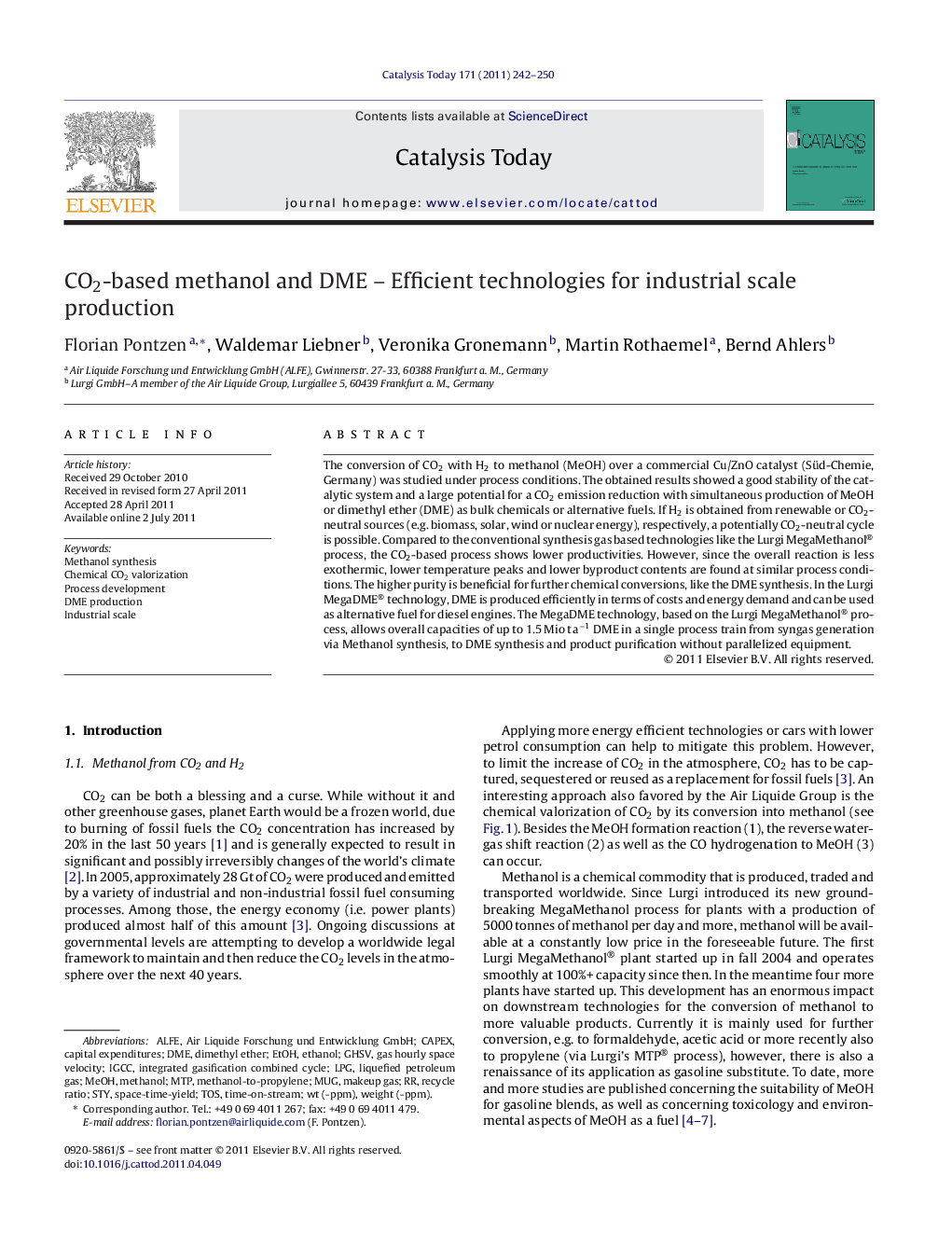| Article ID | Journal | Published Year | Pages | File Type |
|---|---|---|---|---|
| 55951 | Catalysis Today | 2011 | 9 Pages |
The conversion of CO2 with H2 to methanol (MeOH) over a commercial Cu/ZnO catalyst (Süd-Chemie, Germany) was studied under process conditions. The obtained results showed a good stability of the catalytic system and a large potential for a CO2 emission reduction with simultaneous production of MeOH or dimethyl ether (DME) as bulk chemicals or alternative fuels. If H2 is obtained from renewable or CO2-neutral sources (e.g. biomass, solar, wind or nuclear energy), respectively, a potentially CO2-neutral cycle is possible. Compared to the conventional synthesis gas based technologies like the Lurgi MegaMethanol® process, the CO2-based process shows lower productivities. However, since the overall reaction is less exothermic, lower temperature peaks and lower byproduct contents are found at similar process conditions. The higher purity is beneficial for further chemical conversions, like the DME synthesis. In the Lurgi MegaDME® technology, DME is produced efficiently in terms of costs and energy demand and can be used as alternative fuel for diesel engines. The MegaDME technology, based on the Lurgi MegaMethanol® process, allows overall capacities of up to 1.5 Mio t a−1 DME in a single process train from syngas generation via Methanol synthesis, to DME synthesis and product purification without parallelized equipment.
Graphical abstractFigure optionsDownload full-size imageDownload high-quality image (281 K)Download as PowerPoint slideHighlights► CO2-based methanol/DME production processes are possible. ► Standard catalyst systems are suitable for the CO2 hydrogenation. ► Productivities are lower, selectivities are higher than for standard syngas. ► Further technological optimization is possible. ► Lurgi MegaDME® technology allows efficient DME production on a 1.5 Mio t a−1 scale.
